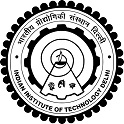Recent work done by Dr. Suresh Bhalla. Details can be obtained from following publication :
|
|
Rahul Meena has just completed Project under the guidance of Dr Suresh Bhalla entitled "Analysis and design of low cost engineered
bamboo structures. |
Aakash Kushwaha completed a Mini Project under the guidance of Dr Suresh Bhalla entitled "Fabrication and Elemental
Characterization of Multipurpose
Dismountable Bamboo Geodesic Dome. |
|
|
| Avishek Shaw completed a Mini Project under the guidance of Dr Suresh Bhalla entitled "Characterization of Engineered Bamboo for Buildings. |
|
|
|
| Deepti Chauhan completed a Mini Project under the guidance of Dr Suresh Bhalla entitled "Analysis And Design of Bamboo based Cowshed. |
|
|
|
| Moti Baba completed a Mini Project under the guidance of Dr Suresh Bhalla entitled �Shed Type Structures: Steel Vs Bamboo. The project attempted to make use of the scientific methodology developed by Dr. Bhalla for the design of bamboo structures for optimization studies. |
|
|
|
| Nikhil Vyas completed a Mini Project under the guidance of Dr Suresh Bhalla entitled Bamboo Based Poultry Shed. As a part of the project, a new type of dismountable poultry structure has been proposed based on the idea of tensegrity structures. |
| Read More |
|
| Bhalla, S., Gupta, S., Sudhakar, P. and Suresh, R. (2008),
BAMBOO AS GREEN ALTERNATIVE TO CONCRETE AND STEEL FOR MODERN STRUCTURES ,
International Congress of Environmental Research, Goa, 18-20 December 2008 |
| |
 |
|
| (a) Front elevation. (b) Side elevation. |
| Fig. 1 Details of typical industrial shed aimed to be replaced with bamboo. |
|
 |
|
| Fig. 2 Analysis of transverse frame for wind normal to ridge, inside pressure. |
|
| S.No. |
WIND CASE |
TENSILE FORCE(kN) |
MOMENT(kNm) |
HORIZANTAL FORCE(kN) |
| 1 |
Wind normal to ridge, inside suction |
3.2 |
74.5 |
39.8 |
| 2 |
Wind normal to ridge, inside pressure |
53 |
70.5 |
36.5 |
| 3 |
Wind along ridge, inside suction |
0 |
4.2 |
4.2 |
| 4 |
Wind normal along ridge, inside pressure |
46.3 |
4.2 |
4.2 |
|
|
| Table 1 : Summary of force at bottom of column for four wind conditions. |
|
 |
 |
| (a). Arch and tie element. |
(b). Columns. |
 |
 |
| (c). Vertical and bottom chord bracing. |
(d). Purlins. |
| Fig. 3 Cross section of various components worked out by design principles. |
|
|
| DESIGN OF BAMBOO TIED ARCH |
| Fig. 4 shows the idealized model of the bamboo tied arch. The arch is assumed to follow a parabolic profile as given by : |
 |
|
| whereH is the crown height and L the span of the arch. In general, under a uniformly distributed load w (acting downwards), the force in the arch (Fa) and the tie element (Ft) can be derived, using equilibrium of forces, as |
 (Compressive)(2) (Compressive)(2) |
 (Tensile)(3) (Tensile)(3) |
|
| Table 2 summarizes the maximum forces induced in the tie and the arch components under the load combinations DEAD LOADS + LIVE LOADS and DEAD LOADS + WIND LOADS. Wind case 2 (Table 1), which offers the maximum upward load on the arch element has been considered in the above combinations. |
|
 |

